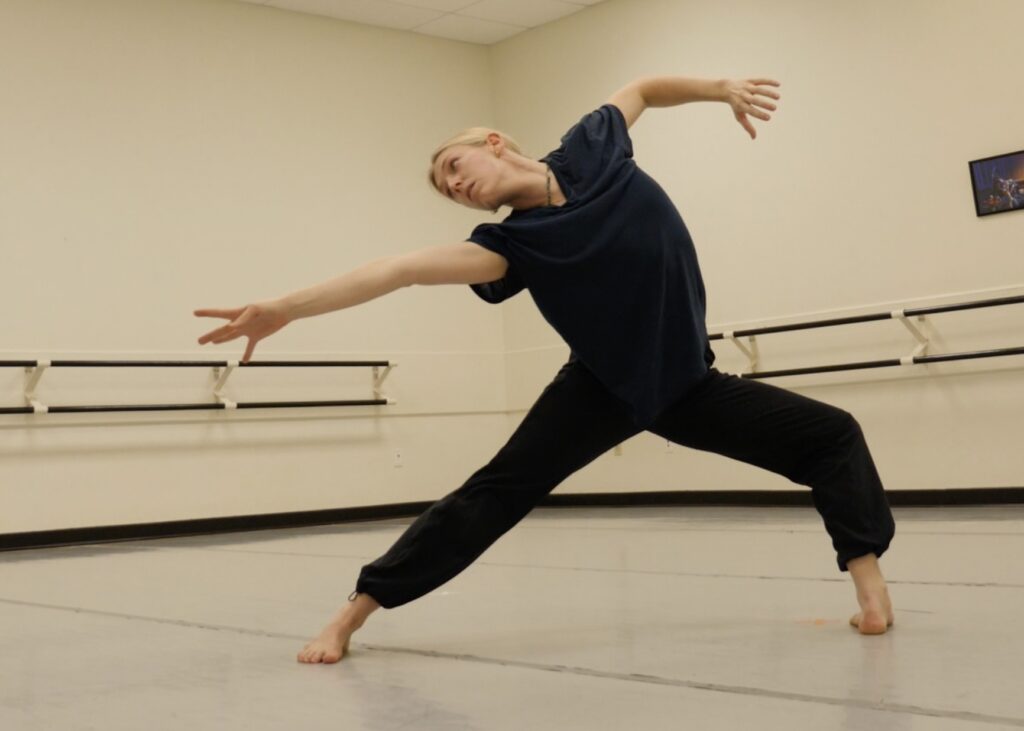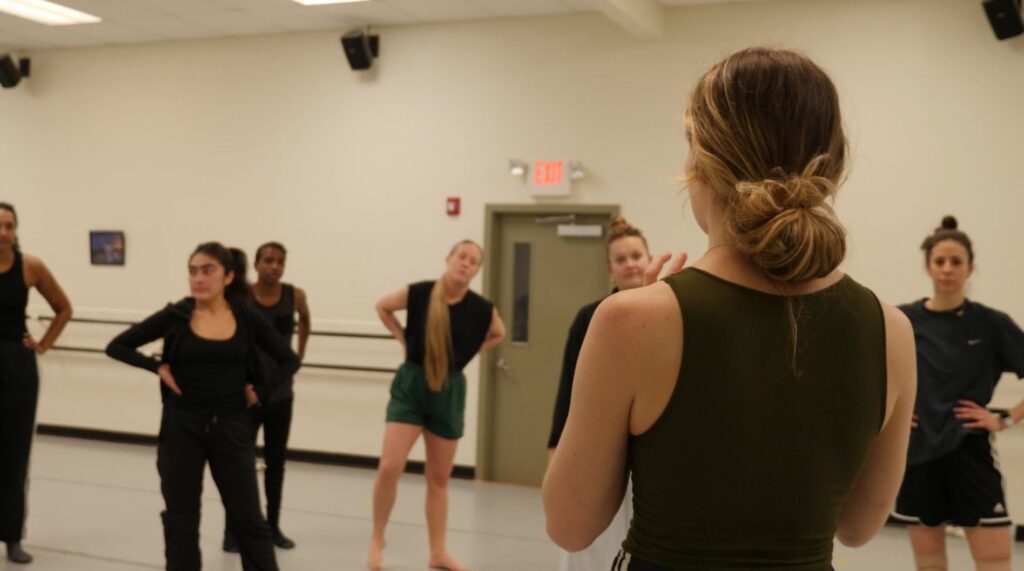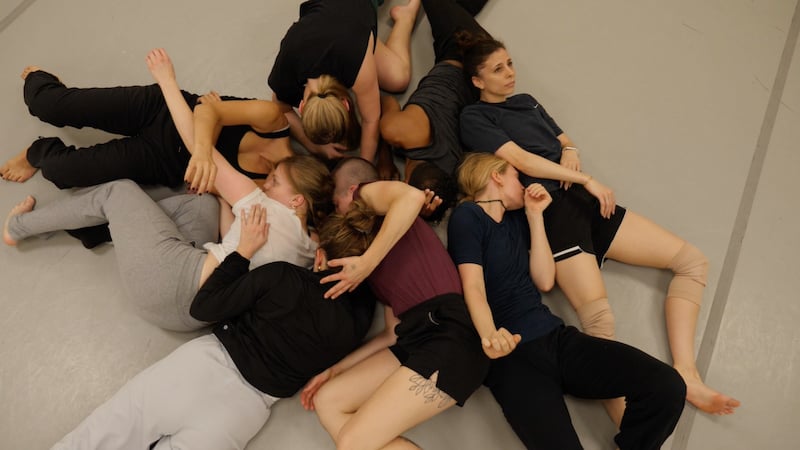During a recent rehearsal for subzero, her first evening-length work, Patsy Collins demonstrated the craft of choreography, the honing and shaping that follows the hectic rush of invention.
“You should be like beads on a string, following not just the person in front of you but the person in front of them and the person in front of them, all the way to the end,” she said as two lines of dancers progressed from opposite corners along converging diagonals. “When you walk, the momentum comes from your whole torso, as if someone is pushing you at the shoulder and waist.”
Thematically, as its name indicates, subzero explores cold, stasis, detachment and discomfort. Collins is interested, however, in how something that seems still on the surface can be a riot of internal turmoil. Ice and other crystalline structures, though rigid, are examples of barely controlled equilibrium that might shatter spectacularly with the subtlest environmental shifts.

Collins and her ensemble will present the premiere of subzero at Callanwolde Fine Arts Center this Sunday at 3 p.m. and 7 p.m.
In an interview with ArtsATL, Collins described the importance of making room for craft in the choreographic process, which is sometimes a luxury for independent artists.
She created subzero during the Meli Kaye Artist Residency at Decatur School of Ballet, a program that supports the creation of new work with studio space, paid teaching opportunities and a small production stipend. The residency culminated with an in-studio presentation this spring. “At the showing, the dancers had run through the whole thing with everyone present once, maybe twice, before they performed. Now they have more body knowledge, more grit and groundedness to the movement.”
Collins had worked with each of her 10 ensemble members prior to the Meli Kaye residency, and their established rapport, along with the dedicated rehearsal space and time, allowed her to explore new concepts.
“I knew I was going to have this consistent group of dancers with me,” she said. “And so I could start from the group, versus starting with smaller things, which allowed new ideas and shapes to come together.” As a result, in subzero, audiences will see Collins’ signature vocabulary — featured in her shorter works Swarm, part of Dance Canvas 2022, and sciath, for ALA Dance last season — as well as her new attention to the compound architecture of multiple bodies joining in the same space.
During the rehearsal, Collins spent several minutes with a section in which the dancers, in pairs, formed a series of tableaux. Examining each couple from every possible angle — the work will be performed in the round at Callanwolde — she nudged them into shapes that, like waves or icebergs, seemed uniform at a glance. Upon closer investigation, however, even though they were shaped by similar forces, particularities emerged in how each set of dancers expressed those forces.
The choreography of subzero uses weight-sharing and supported contact work to explore the shapes and forces bodies create together. More subtly, Collins has used this opportunity of further developing the work to investigate how choreography itself transforms individuals into a collective, like tuning forks all resonating at the same frequency.
Collins and the dancers spent much of their rehearsal time deconstructing an expansive, synchronized movement phrase in which the dancers, grouped into two diagonal lines, worked through multiple level changes and engaged every part of the body from nose to toe-tip. “Less reverb on that stop. It should come from the knee and foot, not the sternum,” Collins advised. “Your big toe should drag along the floor in the leg swing. It’s not a pointed foot,” she reminded the dancers at another point.
In ballet, or even some forms of modern dance such as the Martha Graham or Lester Horton technique, everyone generally agrees on where the impetus for a particular movement comes from or what overall shape a gesture should have.

In contrast, the freedom of movement inherent in an open-ended contemporary vocabulary creates a multitude of possibilities for every step. To draw out the analogy with vocabulary, during the Meli Kaye residency, Collins and dancers invented a dance “language” for subzero. In this rehearsal, their work was equivalent to refining the pronunciation of individual words and even syllables.
While the rehearsal focused on creating uniformity in one part of the dance, Collins says that subzero as a whole contrasts such moments of precise synchronicity with opportunities for the dancers to improvise. “In those sections, I set a movement base and then offered different roles so the dancers could tap into the sensation of numbness, or that of desperation and trying to break free, or they could help one another or tap into a kind of ‘hive mind’ experience of existing in this world.”
Before the performances at Callanwolde on Sunday, Collins and the dancers will offer a free class that the community can participate in or just observe.
::
Robin Wharton studied dance at the School of American Ballet and the Pacific Northwest Ballet School. As an undergraduate at Tulane University in New Orleans, she was a member of the Newcomb Dance Company. In addition to a bachelor of arts in English from Tulane, Robin holds a law degree and a Ph.D. in English, both from the University of Georgia.

